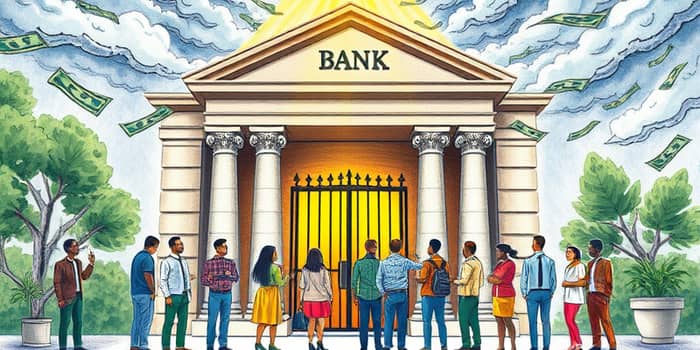
In recent quarters, banks worldwide have adopted a far more cautious approach to lending, reflecting a convergence of economic uncertainty, regulatory pressure, and shifting risk perceptions. As credit conditions tighten, both businesses and consumers face new hurdles in securing financing. Yet, with the right insights and proactive strategies, borrowers can adapt and thrive even in this challenging environment.
Drawing on the latest data from the United States, the euro area, and other major financial centers, this article offers a comprehensive analysis of current trends, explores the underlying drivers, and provides practical guidance to help you
navigate the tightening of lending standards.
As of Q2 2025, 18.5 percent of U.S. banks reported tighter standards for commercial and industrial loans to large and mid-market firms, a notable jump from 12.5 percent in Q1 and a mere 4.8 percent in the prior quarter. In parallel, euro-area lenders signaled a net 3 percent tightening on enterprise loans in Q1, with expectations of further restrictions in Q2.
Consumer lending is also feeling the squeeze. In the U.S., a modest share of banks have imposed stricter credit card limits, while roughly 17 percent report weaker demand. Meanwhile, euro-area banks tightened consumer credit standards by a net 3 percent, even as mortgage criteria eased by 7 percent in a bid to remain competitive.
These shifts reflect both evolving risk appetites and heightened risk perceptions and cautious stance across the banking sector. Borrowers now encounter smaller credit lines, steeper risk premiums, more rigorous covenants, and increased collateral demands.
Several interconnected factors are fueling this global trend:
Collectively, these factors create a more restrictive lending ecosystem that demands greater preparation from any entity seeking funds.
For businesses, especially large and mid-market firms, higher borrowing costs and tighter covenants can strain working capital and hamper investment plans. Small enterprises face a mixed picture: while U.S. banks slightly eased standards for firms with annual sales under 50 million dollars, demand remains muted across the board.
Consumer borrowing has split trends. Mortgage seekers in parts of the euro area benefit from eased criteria and competitive rates, whereas credit card applicants in both regions face tougher vetting and reduced limits. Auto loans and home equity lines stand mostly unchanged, though specific circumstances—like post-disaster rebuilding—have prompted banks to respond to localized demand spikes.
Even in a constrained environment, borrowers can position themselves for success through careful planning and proactive communication. Consider these practical steps:
By adopting these measures, borrowers can demonstrate transparency and readiness, making lenders more comfortable with extending credit, even as risk appetites remain subdued.
Most U.S. and euro-area banks anticipate that lending standards will stay tight in the near term. Any easing is likely to hinge on clearer growth prospects, stable inflation readings, and improved borrower demand. In the U.S., multifamily CRE loans and mortgages are viewed as the first categories to relax when conditions allow. In Europe, continued competition among banks may lead to selective easing in home loans.
Technological innovations and regulatory shifts will also play a role. Fintech lenders, subject to emerging oversight, may fill gaps left by traditional banks but must adhere to evolving standards for data security and consumer protection. Sustainable finance initiatives and green lending frameworks may open new avenues for borrowers aligned with environmental goals.
Ultimately, the current tightening cycle is part of a dynamic financial landscape shaped by macroeconomic forces and evolving policy. While the hurdles are real, preparedness and adaptability will unlock opportunities even in a more selective credit market. By understanding the drivers behind stricter standards and embracing innovative financing strategies, businesses and consumers can continue to access the capital they need to grow and prosper.
References













